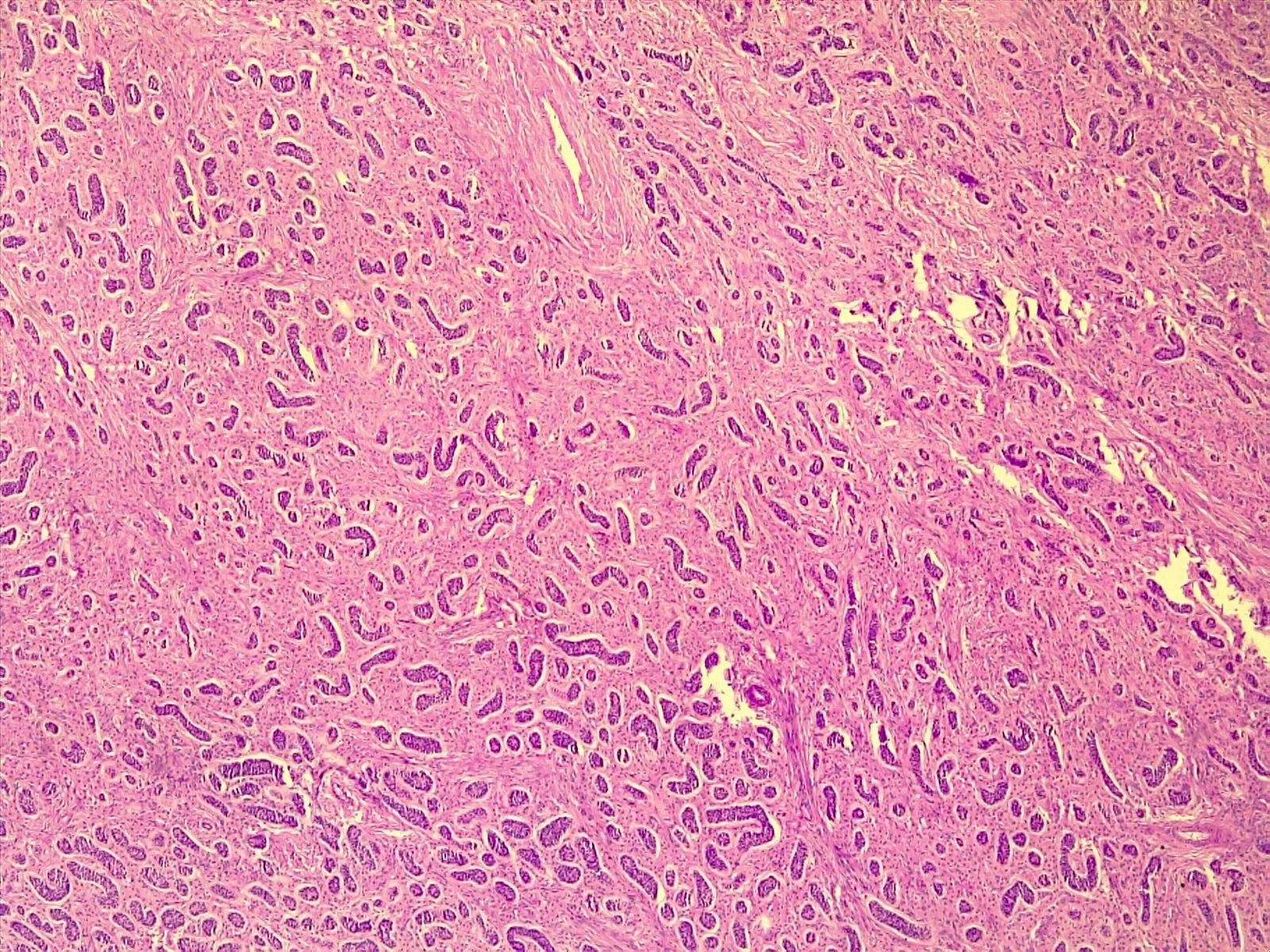Table of Contents
Definition / general | Terminology | Epidemiology | Clinical features | Laboratory | Prognostic factors | Case reports | Treatment | Microscopic (histologic) description | Microscopic (histologic) images | Positive stains | Molecular / cytogenetics description | Differential diagnosisCite this page: Ghofrani M. Ovotesticular DSD. PathologyOutlines.com website. https://www.pathologyoutlines.com/topic/ovarynontumortruehermaph.html. Accessed March 30th, 2025.
Definition / general
- Ovarian and testicular tissue in the same individual (either bilateral or unilateral ovatestes or separate testis and ovary) with or without abnormal genitalia
Terminology
- Ovotesticular disorder of sex development (DSD) in the new terminology (Best Pract Res Clin Endocrinol Metab 2010;24:187)
Epidemiology
- Very rare, with only about 500 cases identified worldwide
Clinical features
- All have uterus, most have fallopian tubes, some have vas deferens
- Usually ambiguous genitalia (J Pediatr Endocrinol Metab 2001;14:421)
- At puberty, 80% have gynecomastia, 50% menstruate
- May be associated with transexualism (Urologiia 2008;2:14)
- All true hermaphrodites who have successfully completed pregnancy have had male offspring to date (Obstet Gynecol 2009;113:534)
Laboratory
- Hormone levels are typically normal
Prognostic factors
- Important to assign gender as soon as possible (in infants, before age 2 - 4), since: (a) usually no other developmental anomalies and (b) patients will have a better chance for normal psychological, sexual and reproductive lives if gonad inappropriate for gender assignment is removed
- Dysplastic gonads are at risk for developing germ cell malignancy; risk of gonadal malignancy increases if Y chromosome is present
Case reports
- 16 year old phenotypic boy with gynecomastia and pubertal arrest (Horm Res 2007;68:261)
- Due to tetragametic chimerism (fertilization of two ova by two sperm, followed by the fusion of the zygotes and the development of an organism with intermingled cell lines, Urology 2009;73:293)
Treatment
- Plastic surgery is the mainstay after gender is assigned, based on genetic sex, gonadal sex, social sex, psychologic sex and patient request
- Conservative gonadal surgery with long term followup (J Urol 2007;177:726)
- Case series on surgical treatment of 25 cases of hermaphroditism, 4 of whom were true hermaphrodites who had female gender assignment (Ann Plast Surg 2009;63:543)
Microscopic (histologic) description
- Ovary usually normal (prepubertal ovary has primordial follicles with primary oocytes with a few primary or antral follicles)
- Prepubertal testis has immature seminiferous tubules lined by immature Sertoli cells and primitive germ cells, usually without spermatogonia
- Ovotestis often has normal ovarian tissue with atrophic testicular tissue (Obstet Gynecol 2009;113:534)
Microscopic (histologic) images
Positive stains
- Placental-like alkaline phosphatase (PLAP) stained gonocytes indicates higher risk of malignant transformation (Int J Gynecol Pathol 2010;29:33)
Molecular / cytogenetics description
- 70% are 46,XX; 10% are 46,XY; 20% show various forms of mosaicism; less than 1% show 46,XX / 46, XY chimerism or two or more cell lines of different genetic origins
- 80% have chromatin positive Barr bodies
- 60% are 46,XX only in blood cells with Y chromosome present in most of rest of cells
Differential diagnosis
- Mixed gonadal dysgenesis:
- Ovarian tissue, if present, lacks primordial follicles; internal / external genitalia are not relevant for distinguishing these 2 conditions






